

Secret of the Golden Flower. FILO. Consciousness. Izzat (honor) Izzat (Hindi-Urdu: इज़्ज़त or عزت) refers to the concept of honor prevalent in the culture of North India and Pakistan.[1] It applies universally across religions (Hindu, Muslim and Sikh), communities and genders.[2][3][4] Maintaining the reputation of oneself and one's family is part of the concept of izzat, as is the obligatory taking of revenge when one's izzat has been violated.[5] Although the concept of izzat has been viewed as curtailing the freedom of women, it is also a strongly egalitarian concept that cuts across social hierarchy and enforces "equality in giving, but also equality in vengeance.
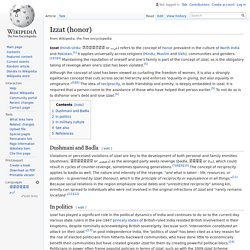
"[5][6] The idea of reciprocity, in both friendship and enmity, is deeply embedded in izzat. It is required that a person come to the assistance of those who have helped that person earlier.[5] To not do so is to dishonor one's debt and lose izzat.[5] Delilah. Delilah (/dɪˈlaɪlə/; Hebrew: דלילה Dəlilah, meaning "[She who] weakened")[1] is a character in the Hebrew bible Book of Judges, where she is the "woman in the valley of Sorek" whom Samson loved, and who was his downfall.
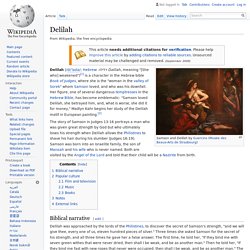
Her figure, one of several dangerous temptresses in the Hebrew Bible, has become emblematic: "Samson loved Delilah, she betrayed him, and, what is worse, she did it for money," Madlyn Kahr begins her study of the Delilah motif in European painting.[2] The story of Samson in Judges 13-16 portrays a man who was given great strength by God but who ultimately loses his strength when Delilah allows the Philistines to shave his hair during his slumber (Judges 16:19). Samson was born into an Israelite family, the son of Manoah and his wife who is never named. Ancient scribes. Ancient scribes. Ancient scribes. Bookenoch. Classics in the History of Psychology. Aristotle: Logic. Aristotelian logic, after a great and early triumph, consolidated its position of influence to rule over the philosophical world throughout the Middle Ages up until the 19th Century.
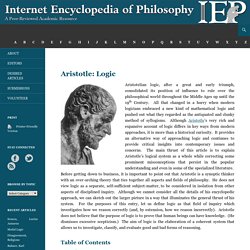
All that changed in a hurry when modern logicians embraced a new kind of mathematical logic and pushed out what they regarded as the antiquated and clunky method of syllogisms. Although Aristotle’s very rich and expansive account of logic differs in key ways from modern approaches, it is more than a historical curiosity. It provides an alternative way of approaching logic and continues to provide critical insights into contemporary issues and concerns. Guide to Philosophy on the Internet (Suber)
Welcome to my collection of online philosophy resources.
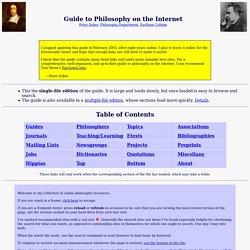
If you are stuck in a frame, click here to escape. If you are a frequent visitor, press reload or refresh on occasion to be sure that you are viewing the most recent version of the page, not the version cached on your hard drive from your last visit. I've marked recommended sites with a red star . Generally the starred sites are those I've found especially helpful for shortening the search for what one wants, as opposed to outstanding sites in themselves for which one ought to search. When the whole file loads, use the search command on your browser to find items by keyword. To register to receive an email announcement whenever this page is revised, see the bottom of this file. Home Page of Slobodan Bob Zunjich.
Plato-ish. Aristotle-ish. Descartes. EMT - Texts. Below is a full list of the texts available on this site, arranged chronologically by author.
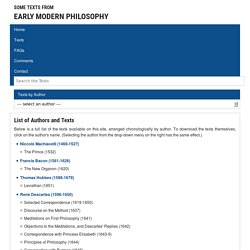
To download the texts themselves, click on the author's name. Reason, Will and Emotion: Defending the Greek Tradition Against Triune ... - Paul Crittenden. InnateMind1. Fuzzy Logic: The Revolutionary Computer Technology That Is Changing Our World - Daniel Mcneill, Paul Freiberger. Unmoved mover. First philosophy[edit] Celestial spheres[edit] Final cause and efficient cause[edit]
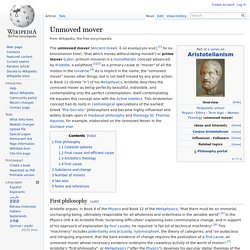
Celestial spheres. Term in ancient times for the heavens Geocentric celestial spheres; Peter Apian'sCosmographia (Antwerp, 1539)
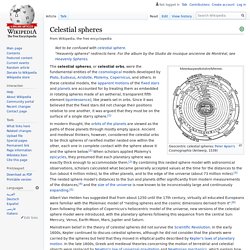
Readings In The History Of Psychology - Wayne Dennis, Pythagorean astronomical system. An astronomical system positing that the Earth, Moon, Sun and planets revolve around an unseen "Central Fire" was developed in the 5th century BC and has been attributed to the Pythagorean philosopher Philolaus, a version based on Stobaeus account, who betrays a tendency to confound the dogmas of the early Ionian philosophers, and he occasionally mixes up Platonism with Pythagoreanism.[1] Brewer (1894, page 2293) mentioned "Pythagoras thought that the sun is a dangerous sphere in the centre of the universe, and that all the planets revolve round it.
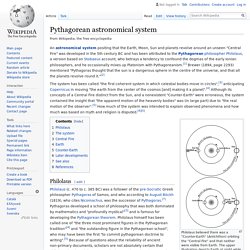
"[2] Philolaus believed there was a "Counter-Earth" (Antichthon) orbiting the "Central Fire" and that neither were visible from Earth. The upper illustration depicts Earth at night while the lower one depicts Earth in the day.[6] Philolaus[edit] Copernican heliocentrism. Heliocentric model from Nicolaus Copernicus' De revolutionibus orbium coelestium Copernican heliocentrism is the name given to the astronomical model developed by Nicolaus Copernicus and published in 1543.

It positioned the Sun near the center of the Universe, motionless, with Earth and the other planets rotating around it in circular paths modified by epicycles and at uniform speeds. The Copernican model departed from the Ptolemaic system that prevailed in Western culture for centuries, placing Earth at the center of the Universe, and is often regarded as the launching point to modern astronomy and the Scientific Revolution.[1] Mysterium Cosmographicum. Detailed view of the inner sphere Mysterium Cosmographicum (lit.
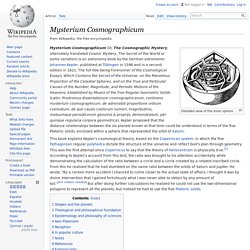
Platonic solid. History[edit] The Platonic solids have been known since antiquity. Carved stone balls created by the late Neolithic people of Scotland lie near ornamented models resembling them, but the Platonic solids do not appear to have been preferred over less-symmetrical objects, and some of the Platonic solids are even absent.[2] Dice go back to the dawn of civilization with shapes that predated formal charting of Platonic solids. Euclid completely mathematically described the Platonic solids in the Elements, the last book (Book XIII) of which is devoted to their properties. Propositions 13–17 in Book XIII describe the construction of the tetrahedron, octahedron, cube, icosahedron, and dodecahedron in that order. Archean. Arche. Arche[pronunciation?] (Ancient Greek: ἀρχή) is a Greek word with primary senses 'beginning', 'origin' or 'source of action'.
(εξ’ ἀρχής : from the beginning, ο εξ’ ἀρχής λόγος:the original argument), and later first principle or element, first so used by Anaximander (Simplicius in Ph. 150.23), principles of knowledge (ἀρχαί) (Aristot. Metaph. 995b8). Apeiron (cosmology) Apeiron (ἄπειρον) is a Greek word meaning "unlimited," "infinite", or "indefinite"[1] from ἀ- a-, "without" and πεῖραρ peirar, "end, limit",[2] the Ionic Greek form of πέρας peras, "end, limit, boundary".[3] His ideas were influenced by the Greek mythical tradition and by his teacher Thales (7th-6th century BC). Searching for some universal principle, Anaximander retained the traditional religious assumption that there was a cosmic order and tried to explain it rationally, using the old mythical language which ascribed divine control on various spheres of reality. This language was more suitable for a society which could see gods everywhere; therefore the first glimmerings of laws of nature were themselves derived from divine laws.[8] The Greeks believed that the universal principles could also be applied to human societies.
The word nomos (law) may originally have meant natural law and used later to mean man-made law.[9] Scholars in other fields, e.g. Nicomachus. Life[edit] Little is known about the life of Nicomachus except that he was a Pythagorean and that he came from Gerasa. Historians consider him a Neopythagorean based on his tendency to view the numbers having mystical properties. [citation needed] The age in which he lived (c. 100 CE) is only known because he mentions Thrasyllus in his Manual of Harmonics, and because his Introduction to Arithmetic was apparently translated into Latin in the mid 2nd century by Apuleius.[2] His Manual of Harmonics was addressed to a lady of noble birth, at whose request Nicomachus wrote the book, which suggests that he was a respected scholar of some status.[2] He mentions his intent to write a more advanced work, and how the journeys he frequently undertakes leave him short of time.[2] Works[edit] Introduction to Arithmetic[edit] Introduction to Arithmetic (Ἀριθμητικὴ εἰσαγωγή, Arithmetike eisagoge), the lesser work on arithmetic.
Musica universalis. The Grammar of Soul: Aristotle, Gurdjieff [Archive] - The Phora. The grammar of Soul: Aristotle and Gurdjieff This comparison and contrast is taken from a larger work in progress. (Concise History of Learning) Mind, Body, World: Foundations of Cognitive Science. Proclus - On Euclid's Elements (1 of 2) Iamblichus' Life of Pythagoras - Iamblichus, Thomas Taylor. Pythagorean Wisdom.